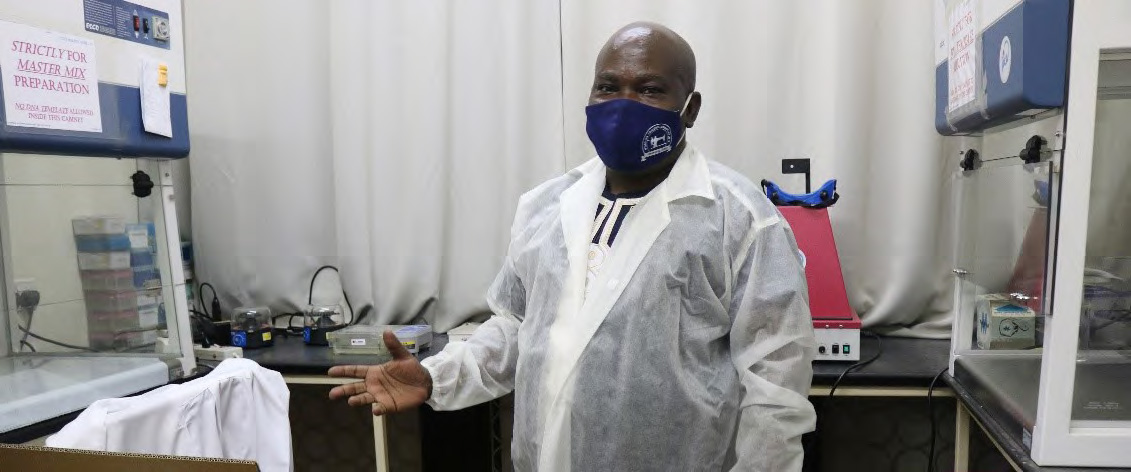In 2017, I was fortunate to be enrolled as post doctorate fellow under the THRiVE-2 DELTAS training program. The program engaged me as a scholar in a temporary and defined period of mentored advanced training to enhance my research and research independence skills needed to pursue an independent research career path. Under this framework, I received quality supervision, career mentoring lessons, skills on establishing collaborative networking and ways of nurturing research environment. In spite of all that, it has been a challenge in realizing independence in research despite all odds at play. Among the ground breaking achievement following my post –doc training was when I was requested to head a diagnostic and research laboratory (Fig 1) at Makerere University’s College of Veterinary Medicine, Animal Resources and Bio-security (COVAB).
This lab offers opportunities for training graduate students, collaborative research and diagnostics. This has given me an opportunity to supervise graduate students; continue publishing; put together a research and grant writing team in collaboration with the University of Cambridge (UOC) and Cornell University (CU). The grant with UOC ended last year in 2020 and that with CU is ending in 2022. In 2020, during the COVID-19 pandemic, I was appointed on the steering committee to oversee the establishment of the Centre for Bio security and Global Health (CEBIGHE) laboratory (Fig 2) at Makerere University. This lab is being prepared to handle research in diseases of zoonotic nature. Its establishment was funded by the African Development Bank through the Ministry of Education.
Furthermore, since zoonotic diseases require a specialized lab (Biosafety level-3), funding to establish it was inevitable. I (as a Co-PI) and a team of two others won a UGX 1B grant from the government of Uganda through Ministry of Science Technology and Innovation (MOSTI) to establish this lab. Currently, we are manipulating zoonotic pathogens and performing experimentation on small lab animals such as mice, rats, rabbits and non-human primates for validation/testing of potential vaccine, therapeutics and diagnostics candidates. The grant spans a period of two years. It is the third grant I have been awarded in my post-doctoral career, the first being an Alborada grant I won in collaboration with the University of Cambridge in 2018 and the second being the one that established the CEBIGHE.
For the Alborada grant, I and a team of researchers reported the role of ticks in harboring a unique Crimean Congo Hemorrhagic Fever Virus (CCHFV) strain in addition to other animal and wildlife specific viruses. Surprisingly, of those viruses observed in ticks, 25-30% couldn’t be identified in any of the available viral databases. Thus, further analysis is being undertaken to fully characterize them and we hypothesize that these might be “novel viruses.”
Nevertheless, the CCHFV strain was detected in African blue ticks feeding on cattle in an abattoir in Kampala. These cattle originated from a farm in Mbarara, a major cattle-trading hub for much of Uganda. Characterization of this novel strain adds to our limited understanding of the natural diversity of CCHFV circulating in both ticks and in Africa. Such data can be used to inform the design of vaccines and diagnostics, as well as studies exploring the epidemiology and evolution of the virus for the establishment of future CCHFV control strategies.
Going forward, I will continue to conduct Tuberculosis (TB) research among humans. My most recent study in this area examined whether the interaction between host genes and Mycobacterium tuberculosis (MTB) can affect TB severity in humans. The study hypothesized that the genomes of the human host and MTB interact to modulate risk of developing active TB or increase the severity of disease, when present. Findings indicate that there are changes in human genomes that increase susceptibility to specific MTB strains and that the association between TB severity and human genetics can be due to an interaction between genes in the two species.

